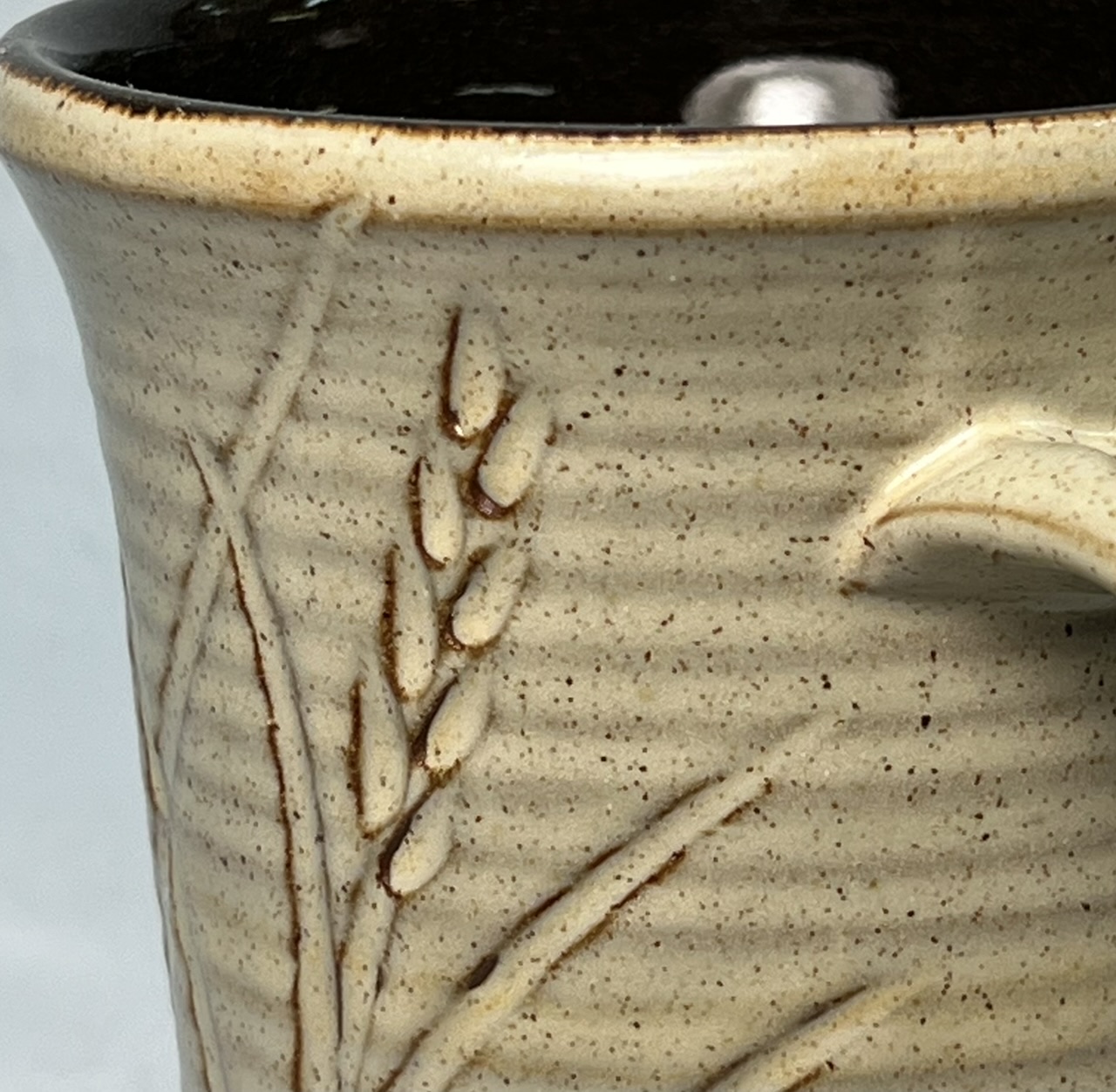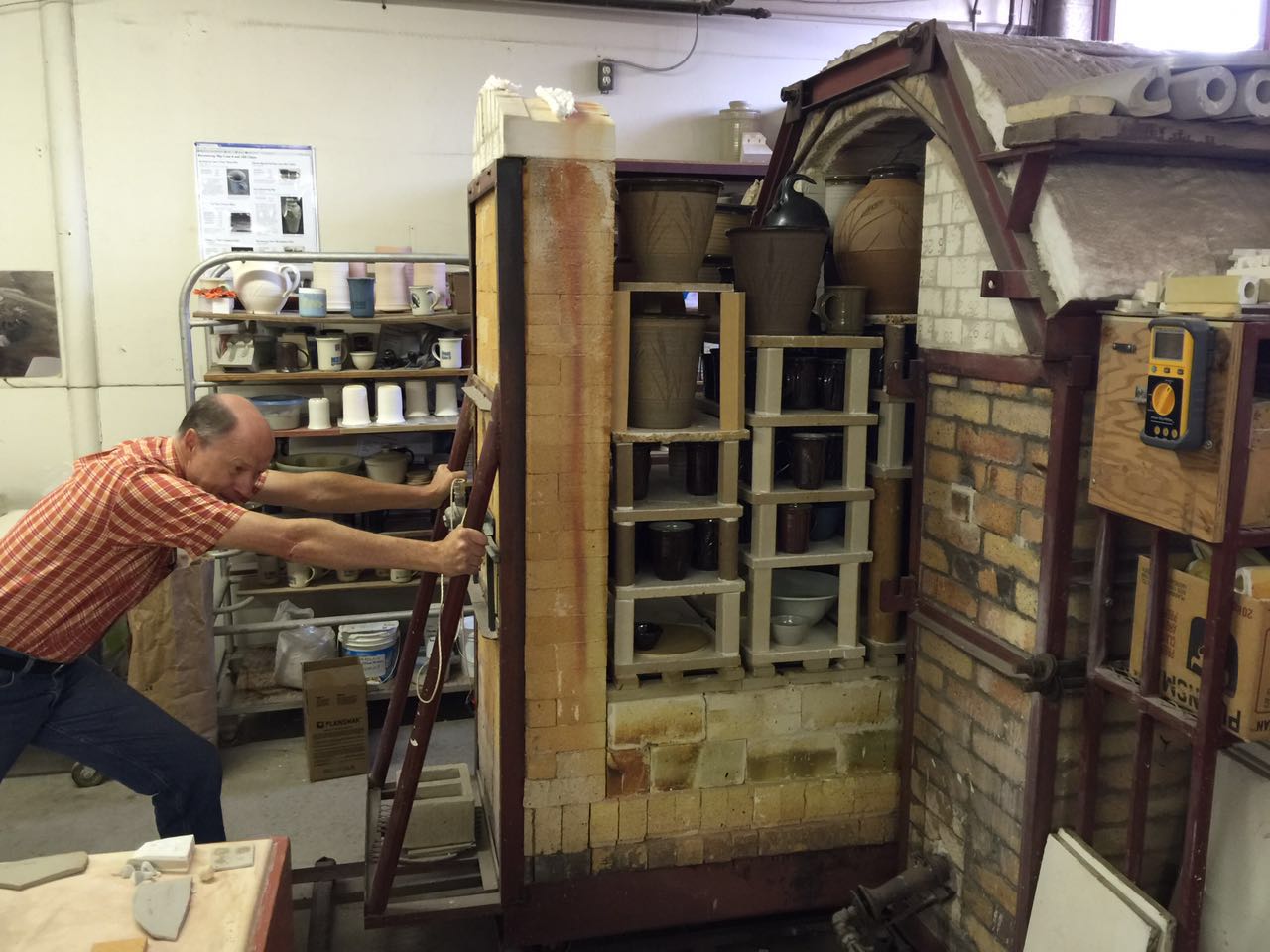| Monthly Tech-Tip | No tracking! No ads! | |
The recipe mixing area in the Plainsman Clays lab
This is my lab work area of mineral, frit, chemical, stain and metal oxide powders for mixing test glazes and clay bodies. Not shown is my propeller mixer, perhaps the most important piece of equipment we have. And my plaster table for dewatering clay body slurries. Building up something like this, over time, is practical for any serious potter, most of these powders are inexpensive. Within minutes I can plan and enter a recipe into my Insight-live.com account, give it a code number, print it and weight it out.
Related Pictures
A test kiln: Enabler to testing glazes
And to evolving your own glaze recipes

This picture has its own page with more detail, click here to see it.
The evolution of the quality and aesthetics of your work, and even your ability to cut costs, are stunted when you depend too much on others (e.g. for firing, for premixed glazes). This mug is a good example of tests I need to do. This is G3933, made by adding iron oxide, rutile and tin oxide to a 75:25 blend of our base matte and glossy glazes (G2926B and G2934).
-It is crawling at some of the sharp angles of the incised decoration, would a little CMC gum fix this?
-Would an 80:20 blend of the two glazes give a little more matteness?
-Our red-burning body gives better color at cone 5, would this glaze be richer and more matte on it in the C5DHSC slow cool schedule?
-I want to test increases in the rutile (for variegation), iron (for better color) and granular manganese (for more speckle).
-Would a Ravenscrag Slip base glaze be a better host for the rutile, iron and tin?
Having a small test kiln puts all of these changes on my radar. An account at insight-live.com to document everything well brings it all together.
Why does Tony Hansen take months to unload his kilns?

This picture has its own page with more detail, click here to see it.
I love making pottery, but I love the technical side more. I searched for all the test specimens in this 2020 load of cone 10 reduction ware first, then pushed it back in and forgot about it. For three months! I really anticipate the test results (I am developing and adjusting many of bodies and glazes at any given time). The data and pictures for them go into my account at insight-live.com, it enables me to compare the chemistry and physical properties of recipes and materials side-by-side. That teaches me which roads to abandon and which ones to pursue. My last kiln went back in for six weeks, so things are getting worse! If you are wondering, we use the C10RPL firing schedule.
A must-have: Laboratory variable speed propeller mixer

This picture has its own page with more detail, click here to see it.
If you are at all serious about testing glazes and clay bodies, you need one of these. There are other methods, but nothing else comes close to this. It is the most valuable and frequently used tool in any ceramic bodies and glazes testing lab or classroom. This is the Lightnin brand, they are expensive but high quality. This is a 1/20 hp variable speed unit, it could be $4000 new! But you can get them used on ebay.com (the industrial mixers are most common, lab mixers are jealously guarded). This one uses a 7.9mm dia (5/16") shaft. We adapted a mount (to give it vertical adjustment) from small drill press.
Videos
Links
| Glossary |
Ceramic Material
Ceramic materials are employed in the ceramic industry to make glazes, bodies, engobes and refractories. We study them at the mineral, chemical and physical levels. |
| Glossary |
Tony Hansen
Tony Hansen is the author of Digitalfire Insight, Digitalfire Reference Library and Insight-Live.com, he is a long-time potter, ceramic lab-technician and body and glaze developer. |
| Glossary |
Slurry Up
The process of slurrying a clay body powder and dewatering it on a plastic slab or table. |
Got a Question?
Buy me a coffee and we can talk

https://digitalfire.com, All Rights Reserved
Privacy Policy

